Linda Lam
September is typically a month of weather changes as we transition from summer to fall. Temperatures get cooler and daylight decreases. Hurricanes remain a concern, while some areas get ready for their first snow of the season. Santa Ana winds also begin to return and the Southwest monsoon wraps up.
Here's a closer look at what changes to expect in the weather this month.
Cooler Temperatures
High and low temperatures take a noticeable dip by the end of the month. For many, one of the clearest signs that fall is here is the cool, crisp mornings that become more common by the end of September.
Average lows in September are in the 50s and 60s for much of the Lower 48, while parts of the northern tier and the higher elevations experience average lows in the 30s and 40s. Morning lows in the 70s remain in much of Florida, along parts of the Gulf Coast and the Desert Southwest.
Lows start the month in the mid-60s in Boston but by Sept. 30, the average low is 53 degrees. In Denver, the average low on Sept. 1 is 55 degrees but tumbles to 44 by the end of the month.
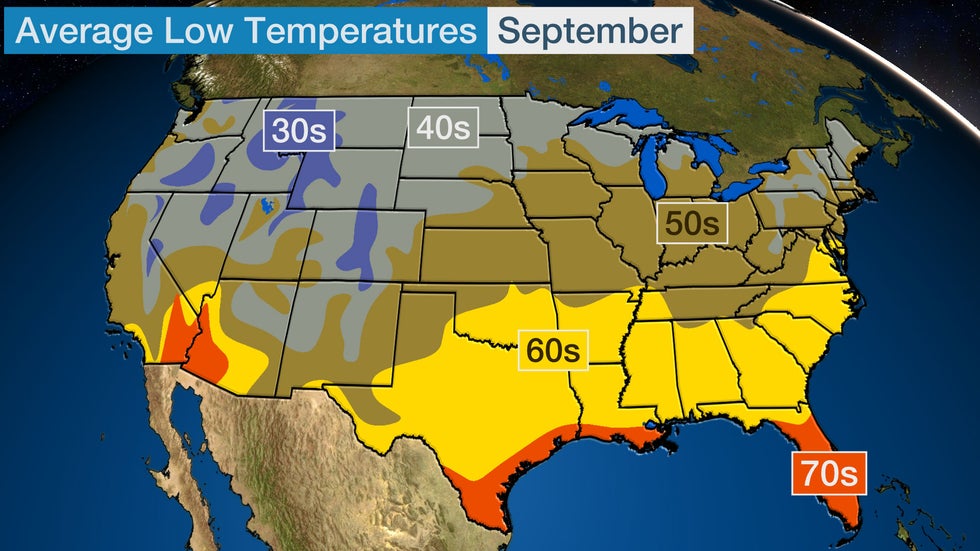 Average September Low Temperatures
Average September Low TemperaturesHigh temperatures take a downward turn as well. Average highs for the month are in the 60s and 70s across much of the northern tier, while 80s still hang on across the southern U.S., with 90s and 100s in parts of Florida, Texas and the Desert Southwest.
The average high temperature in early September in Atlanta is 87 degrees but by the end of the month, it is around 80. In Minneapolis, the average high is in the upper 70s to start the month but falls to the mid-60s by the start of October.
However, the temperature outlook for this September suggests that many areas of the central U.S. may wait a bit longer for fall temperatures to emerge.
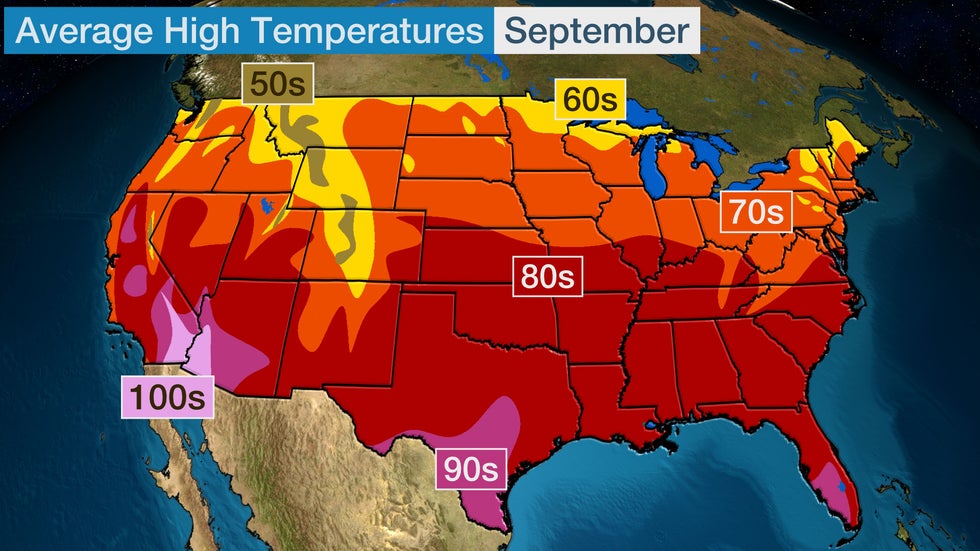 Average September High Temperatures
Average September High TemperaturesFewer Daylight Hours
The hours of sunlight decrease throughout September with the fall equinox on Sept. 22 this year. The autumnal equinox is when the sun shines directly on the equator, meaning both the Northern and Southern hemispheres receive the same amount of daylight. The amount of daylight is not exactly 12 hours on the equinox in the United States but is close in many locations.
Areas farther north see a bigger change in daylight hours during September. Locations across the northern tier lose more than an hour of daylight from the beginning of the month until the end. Anchorage, Alaska, receives almost 2 hours and 45 minutes less daylight on Sept. 30 compared to Sept. 1.
Sunrises get later throughout the month, but the earlier sunsets are more noticeable and signal, for many, that winter is not far down the road.
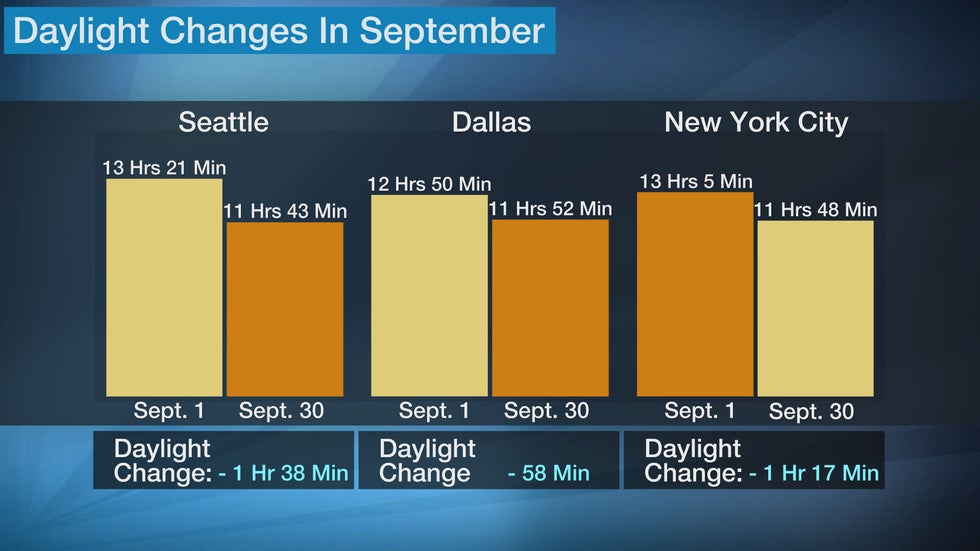 Examples of how much daylight is lost in September.
Examples of how much daylight is lost in September.Tropical Activity
September is prime time for the Atlantic hurricane season, with the peak occurring around Sept. 10.
There are typically four named storms in the Atlantic in September with three of them becoming hurricanes and one to two of those reaching major hurricane status (Category 3 or higher on the Saffir-Simpson Hurricane Wind Scale).
(MORE: Latest Hurricane Season Outlook)
The last three years were very busy in the Atlantic. Both major hurricanes occurred in September in 2022. There were eight named storms in September 2021 and three of them became hurricanes. In September 2020, there were 10 named storms with four hurricanes.
Tropical development is monitored near the U.S. as well as toward the west coast of Africa in September.
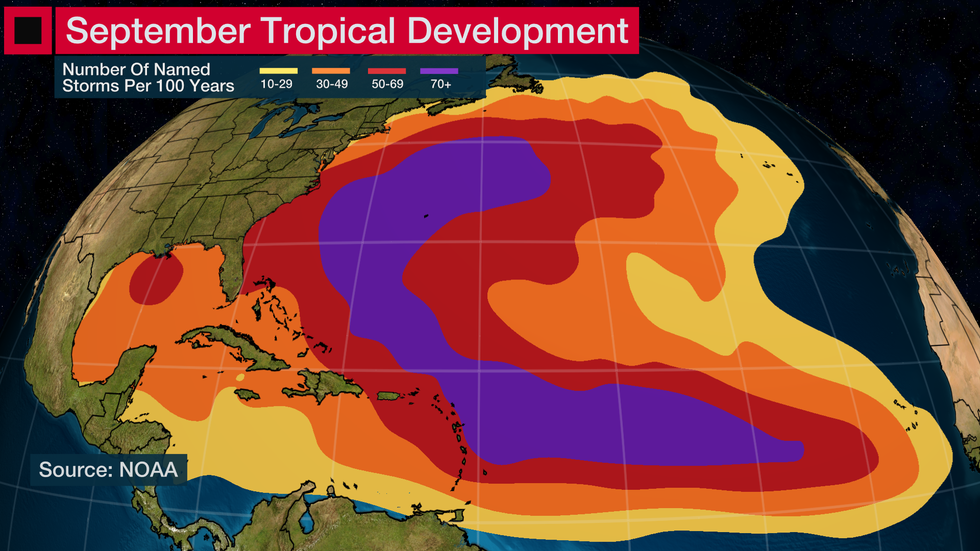
First Snow Of The Season
It may sound strange, but there are some areas where snow can fall in September.
September snow is most common in the higher elevations and in Alaska, where Fairbanks averages 2.4 inches of snow in September. Cheyenne, Wyoming, averages just under an inch of snow, although measurable snow doesn't fall every September.
Snow has also fallen in parts of the Plains, Great Lakes and northern New England in September. Mount Washington, New Hampshire, averages 1.2 inches of snowfall in September.
Recently, a historic September snowstorm hit parts of the northern Rockies in 2019. The highest snowfall total was 48 inches in Browning, Montana. Great Falls, Montana, shattered its September record in what was one of their heaviest snowstorms of all-time.
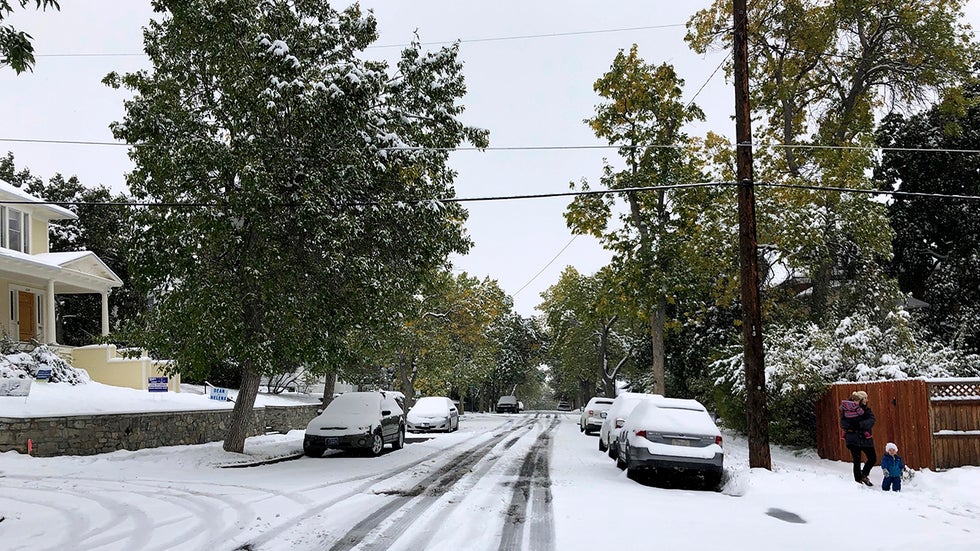 Pedestrians make their way along a snow-covered street lined with trees that still have their leaves during a fall snowstorm in Helena, Montana, on Sunday, Sept. 29, 2019.
Pedestrians make their way along a snow-covered street lined with trees that still have their leaves during a fall snowstorm in Helena, Montana, on Sunday, Sept. 29, 2019.Santa Ana Winds Return And Southwest Monsoon Ends
Weather patterns in the West usually begin to change in September.
One of those patterns results in the return of Santa Ana winds. A strong area of high pressure over the interior West results in an offshore pattern with wind flowing from the higher elevations of the desert areas into canyons and passes in Southern California. Wind speeds increase as they are funneled through the mountain passes. Hot temperatures often accompany Santa Ana winds.
The combination of low humidity levels and the strong winds can add to the fire danger, especially in early fall as California ends its dry season.
Meanwhile, the Southwest monsoon season comes to an end on Sept. 30. This is also due to a shifting of the wind and temperature patterns in the region.
In summer, the winds flow from the ocean into the Southwest, resulting in wet weather over the region. During the fall, that changes as the wind flows from the land to the ocean since the land begins to cool and the water is warmer.
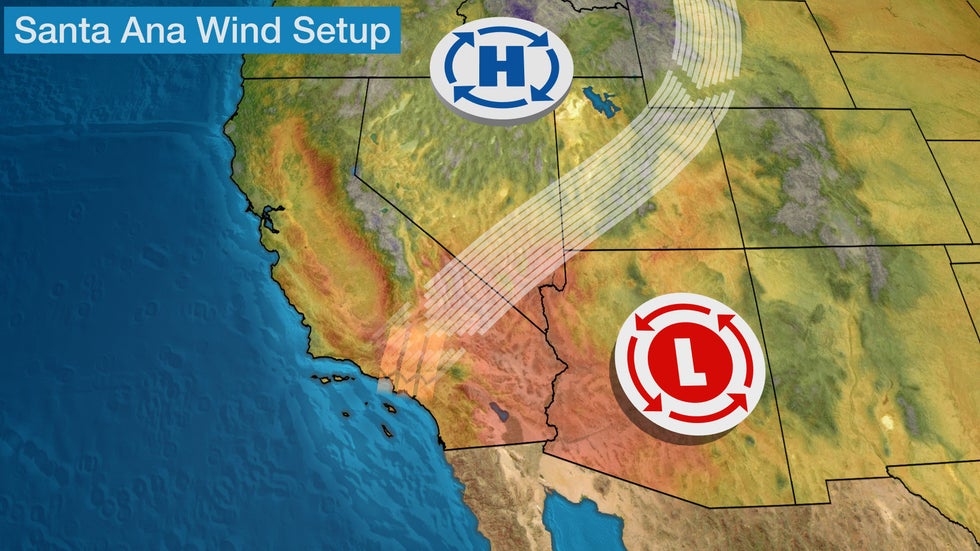 Typical pattern setup for a Santa Ana wind event.
Typical pattern setup for a Santa Ana wind event.The Weather Company’s primary journalistic mission is to report on breaking weather news, the environment and the importance of science to our lives. This story does not necessarily represent the position of our parent company, IBM.
The Weather Company’s primary journalistic mission is to report on breaking weather news, the environment and the importance of science to our lives. This story does not necessarily represent the position of our parent company, IBM.

No comments:
Post a Comment